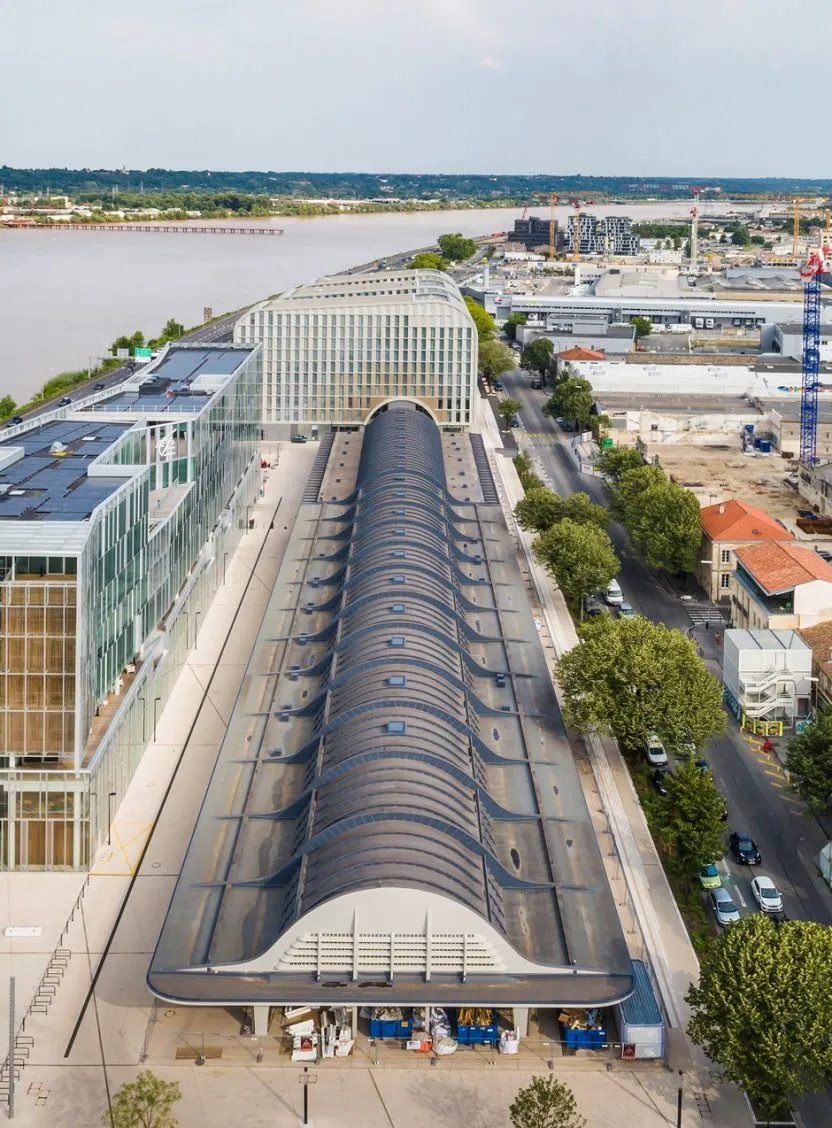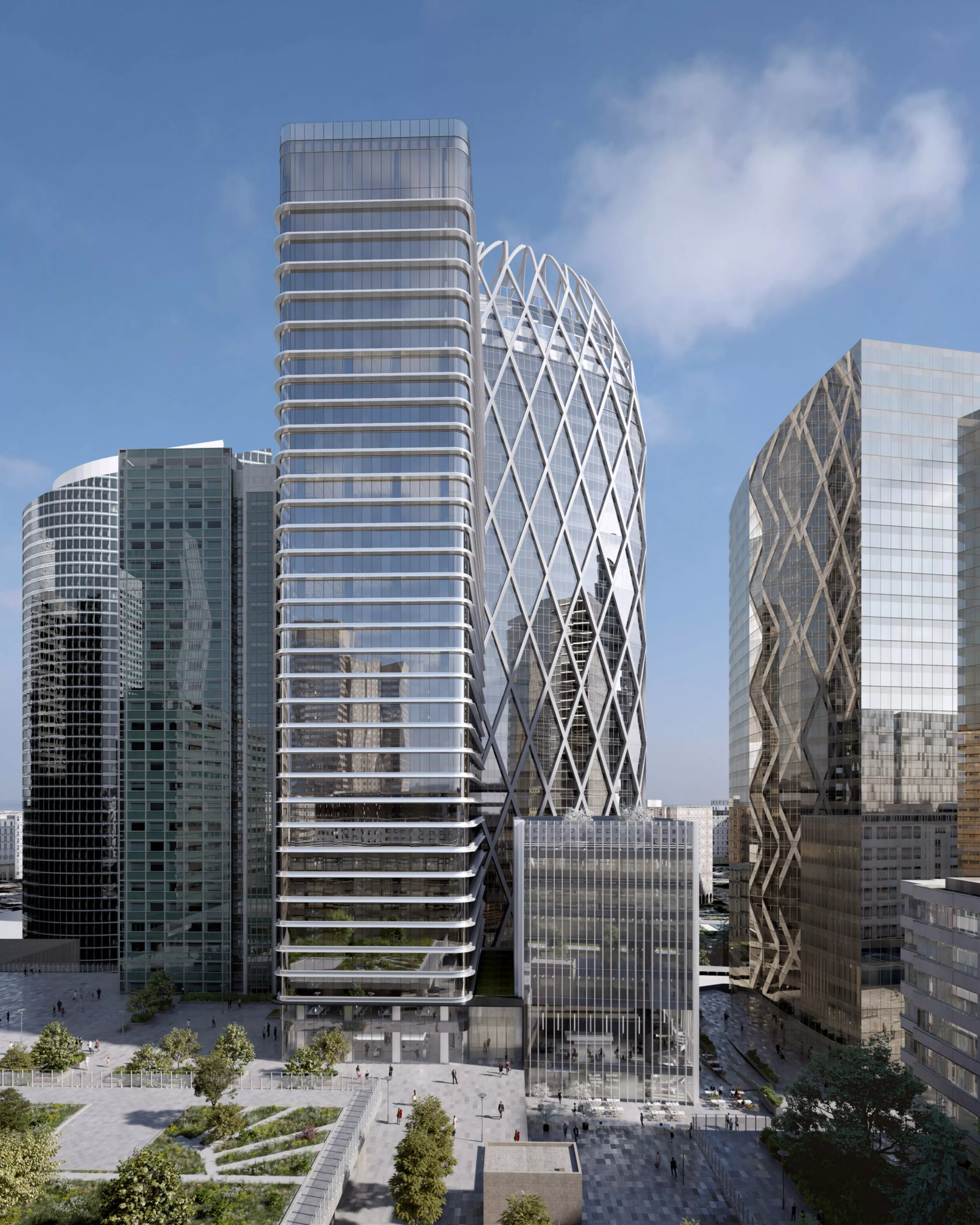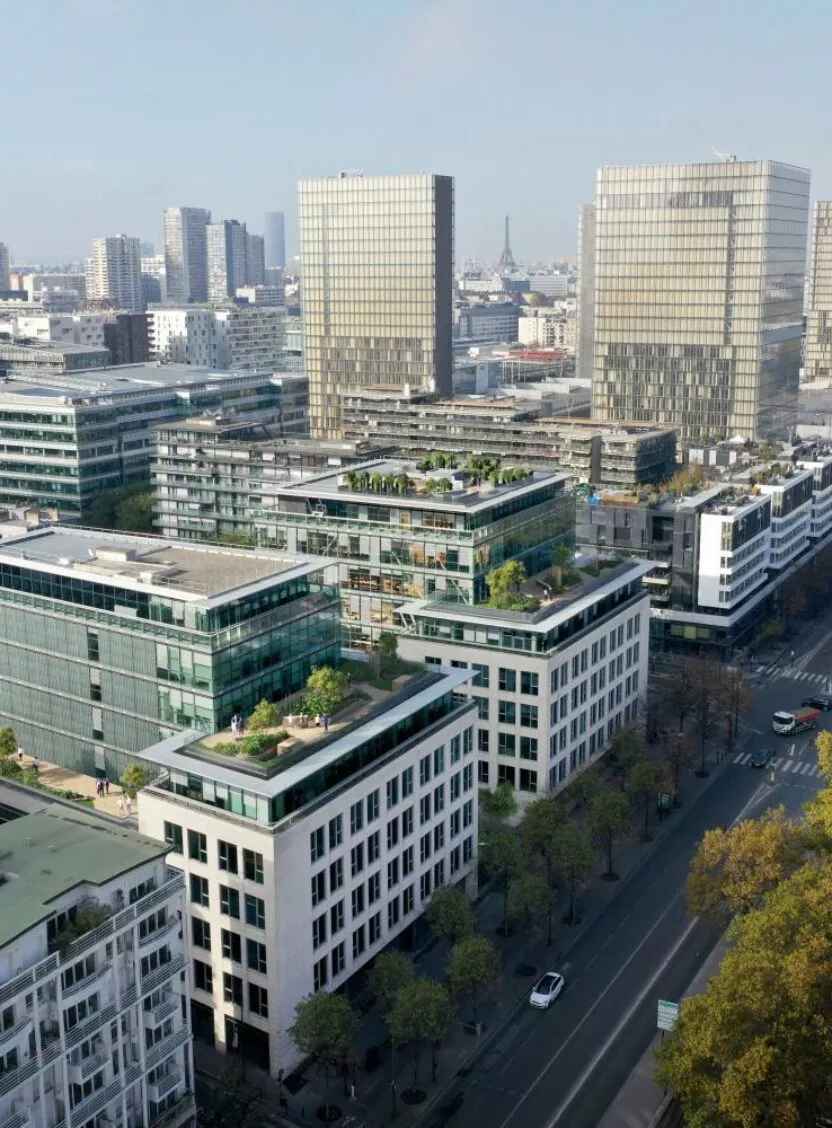
The beginning
Completed in September 1970, the Aurore Tower was one of the first-generation high-rise buildings to be built at La Défense in Paris. Designed by DWW (architects Claude Damery, Pierre Vetter and Gilbert Weil), its distinctive feature is the horizontal strips.
Abandoned
Having aged considerably in the 1990s, Aurore was stripped of asbestos in 1998. It was abandoned for 10 years, until the Air2 project was announced in 2010.
The chronicle of a death foretold
The acquisition of Aurore by investor Carlyle in early 2010 appeared to mark the end of the Aurore tower. A planning application was submitted for a new 202m tower, Air2, designed by architect Arquitectonica, and a demolition permit was displayed on Aurore’s front door. The economic crisis of 2012, followed by appeals from local residents, meant that Air2 was abandoned in 2017, and Carlyle withdrew from the project.
The rebirth
Bought out by the Aermont fund, the demolition / reconstruction project was abandoned. Advised by Orfeo Développement, Aurore’s new owner opted for a renovation designed from the start to have as little impact as possible on the existing structure. As early as the preliminary design phase, preliminary structural calculations were carried out to anticipate the number of storeys that could be raised without having to make major reinforcements to the existing structure. This would be the input for the design team (JP Viguier + Sistostudios Architectes, setec tpi MOE structure, Atys MOE fluids, Artelia MOEX), supervised by Orfeo, whose design mission began at the end of 2017: the start of a new lease of life for Aurore!
The project involved raising the height of the Aurore tower and erecting a new building – the Pavillon – in place of the existing BNP building. This restructuring has been designed to limit the impact on the existing building.
From the outset, the project was designed to be as environmentally friendly as possible (light new structures, number of floors added adjusted to the capacity of the existing structures), with limited reinforcement of the rafters.
This achievement was also possible thanks to the excellent general condition of the existing tower and a very good knowledge of the existing structure (plans were found, numerous inspection campaigns were carried out). According to an estimate by the project’s environmental consultancy, this renovation, which respects the existing structure, saved over 5,600 tonnes of CO2 equivalent compared with demolition and reconstruction, or the equivalent of almost 50 years’ consumption by a high-rise building of its size: Aurore’s new life will therefore have a zero-carbon footprint.


